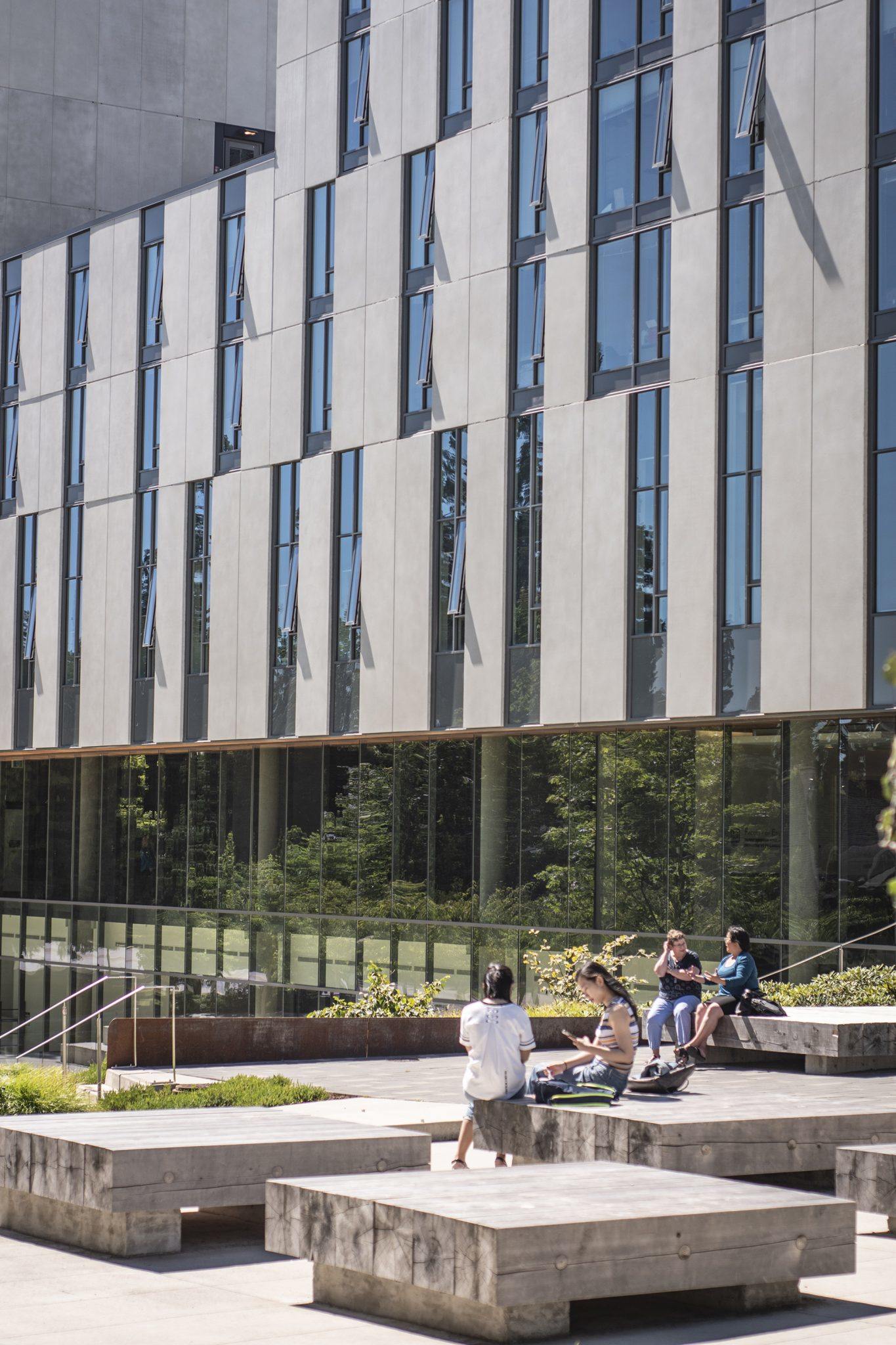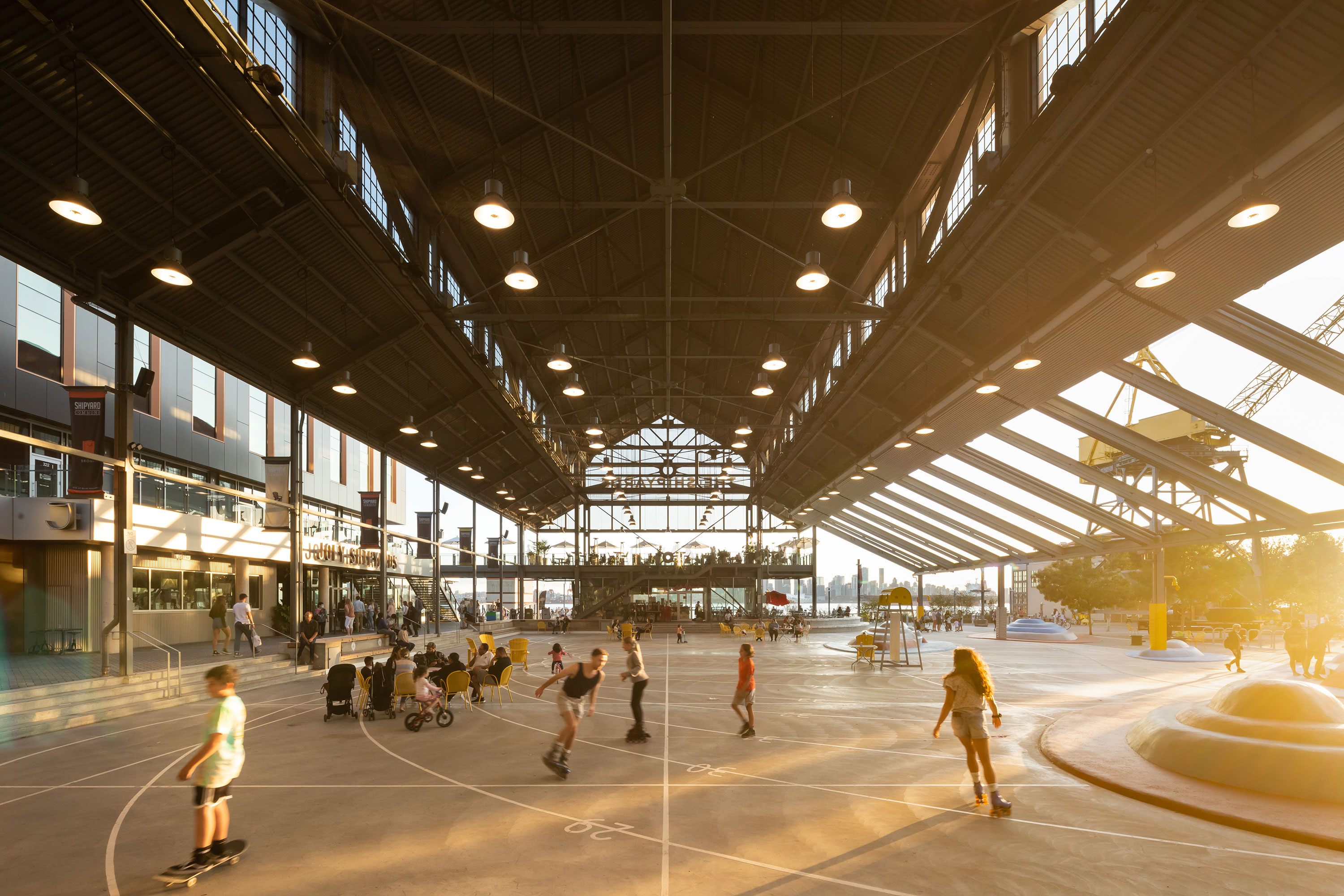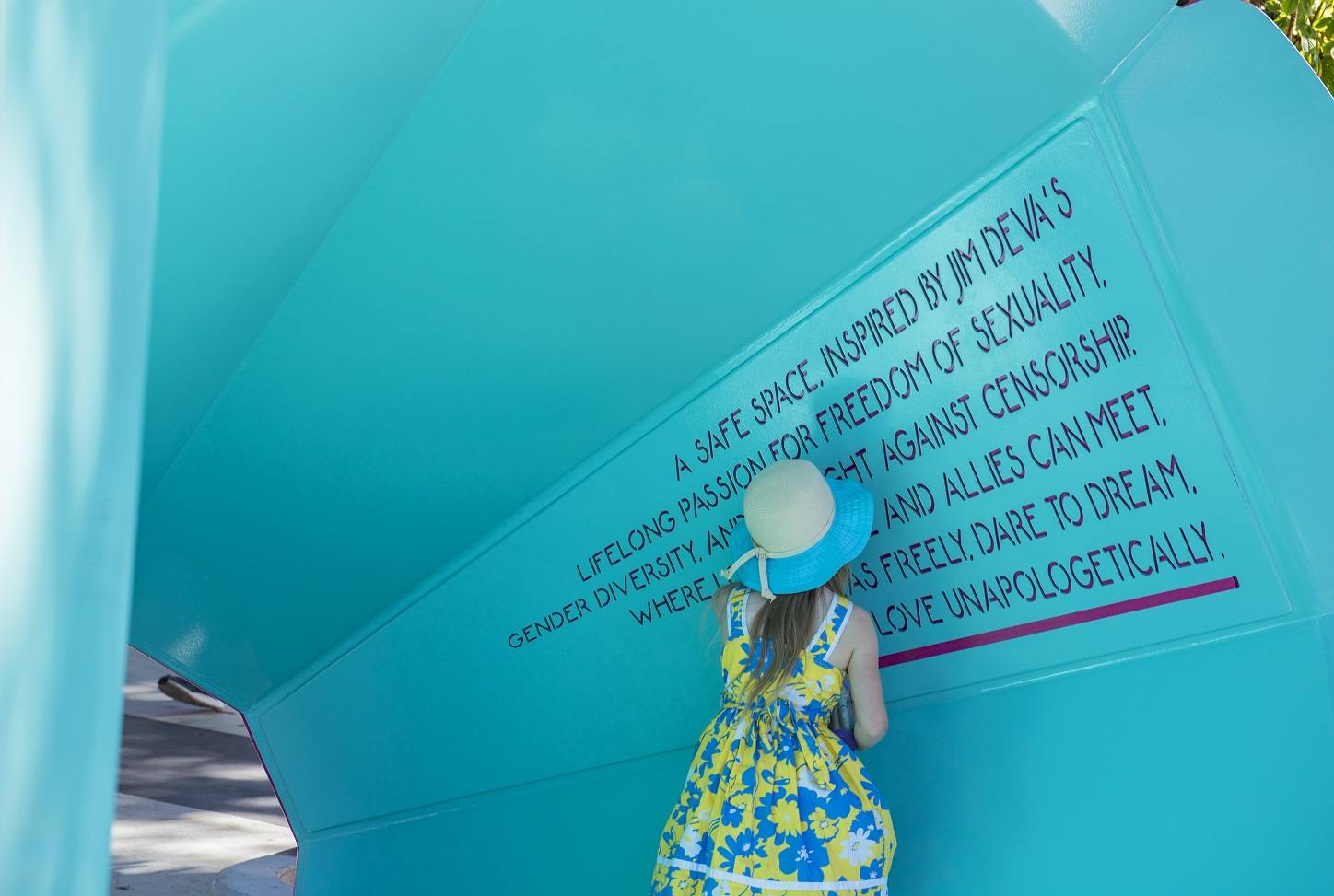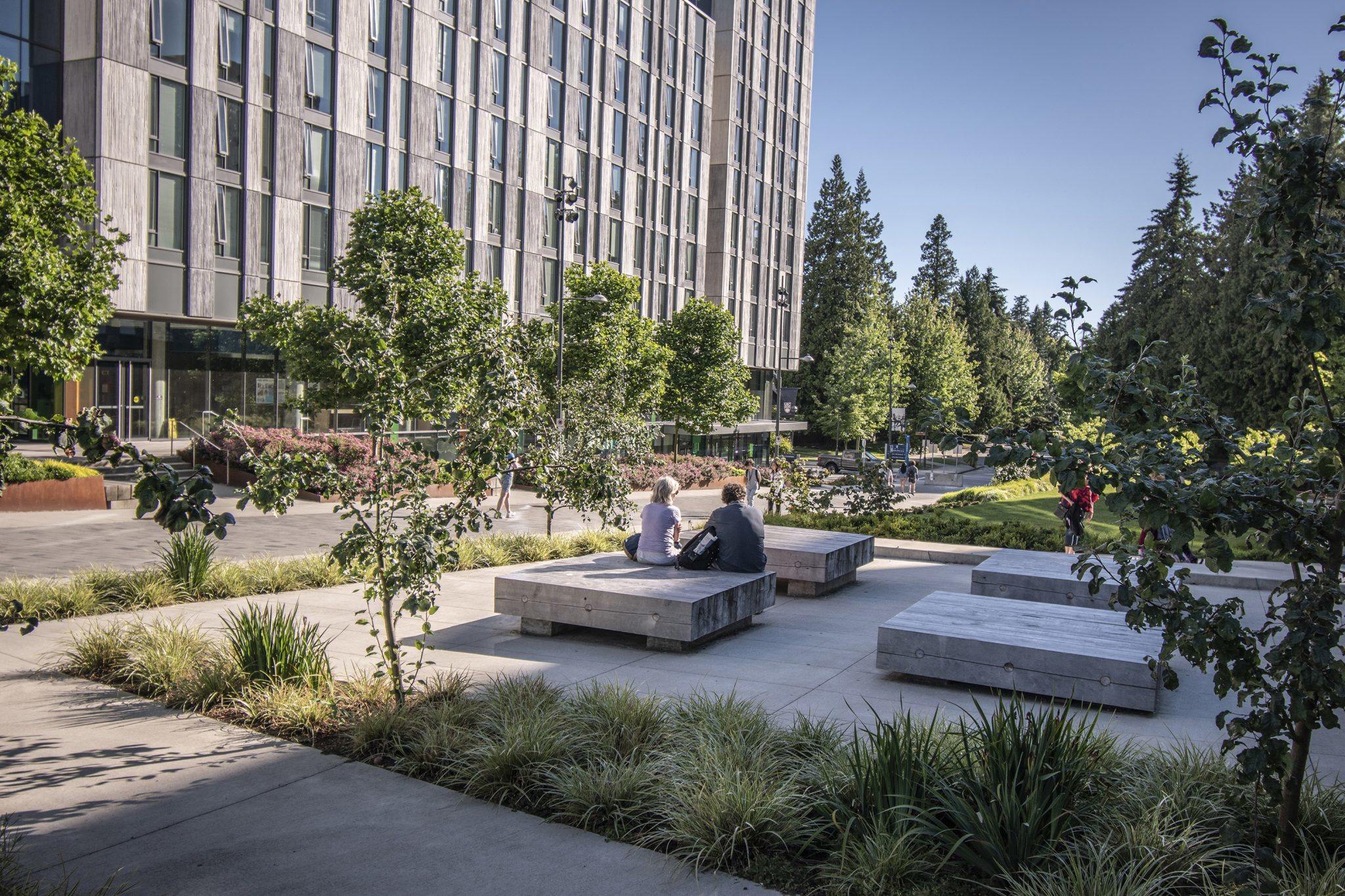
Ponderosa Commons
at University of British Columbia
Vancouver BC
Introducing the idea of ‘The Commons’ was a big step for the University of British Columbia’s Vancouver campus. The masterplan identified several high activity zones, areas on campus where student life was abundant; housing and academic buildings, studios, labs, faculty offices, restaurants, and a hotel. These zones would become the first of their type on campus, with Ponderosa Commons as the first exploration of a pedestrian-only student space. Working alongside the architectural joint venture of HCMA and KPMB, as well as UBC Campus and Community Planning, Hapa embarked on an ambitious design for four acres, phased in tandem with three major buildings.
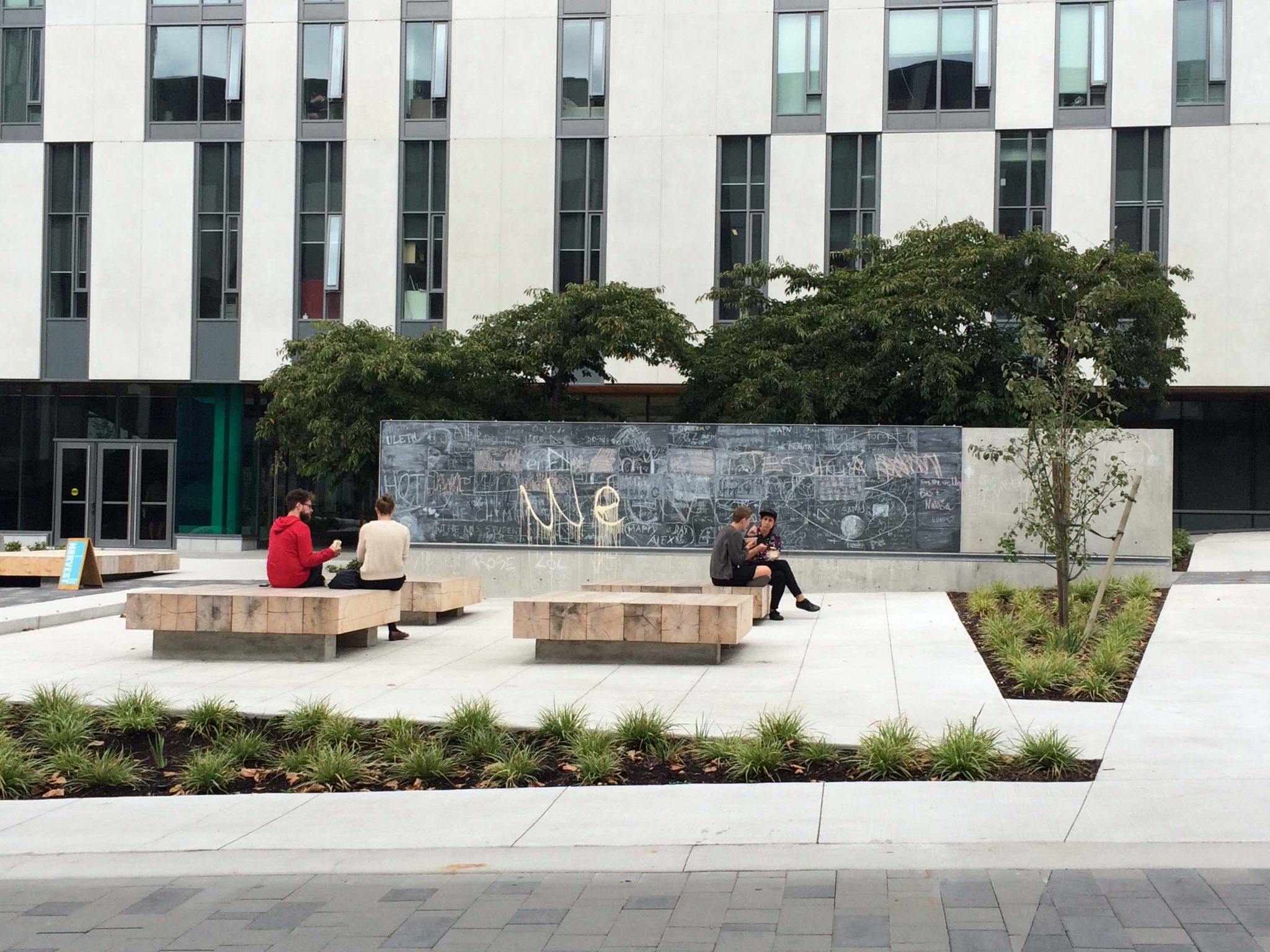

The Challenge of
the Grade
The Commons exists as one block of University Boulevard, a wide linear roadway formerly dominated by vehicles and sloping lawns. It serves as terminus to one of the campus’ major axes and houses three courtyards sprung from new architecture. Our concept focused on the most active, public areas of the central landscape on the boulevard while creating calm, intimate spaces within the courtyards.
Extensive grading studies were performed, looking at how the site could be as accessible as possible to as many users as possible. Working with an accessibility consultant, the strategy adopted was to accept the natural slope of the site – a consistent 5.4% – as ‘accessible’ and connect all entrances to a main walkway down this slope. By accepting a slightly steeper grade we were able to avoid employing a single traditional 1 in 12 ramp throughout the design.
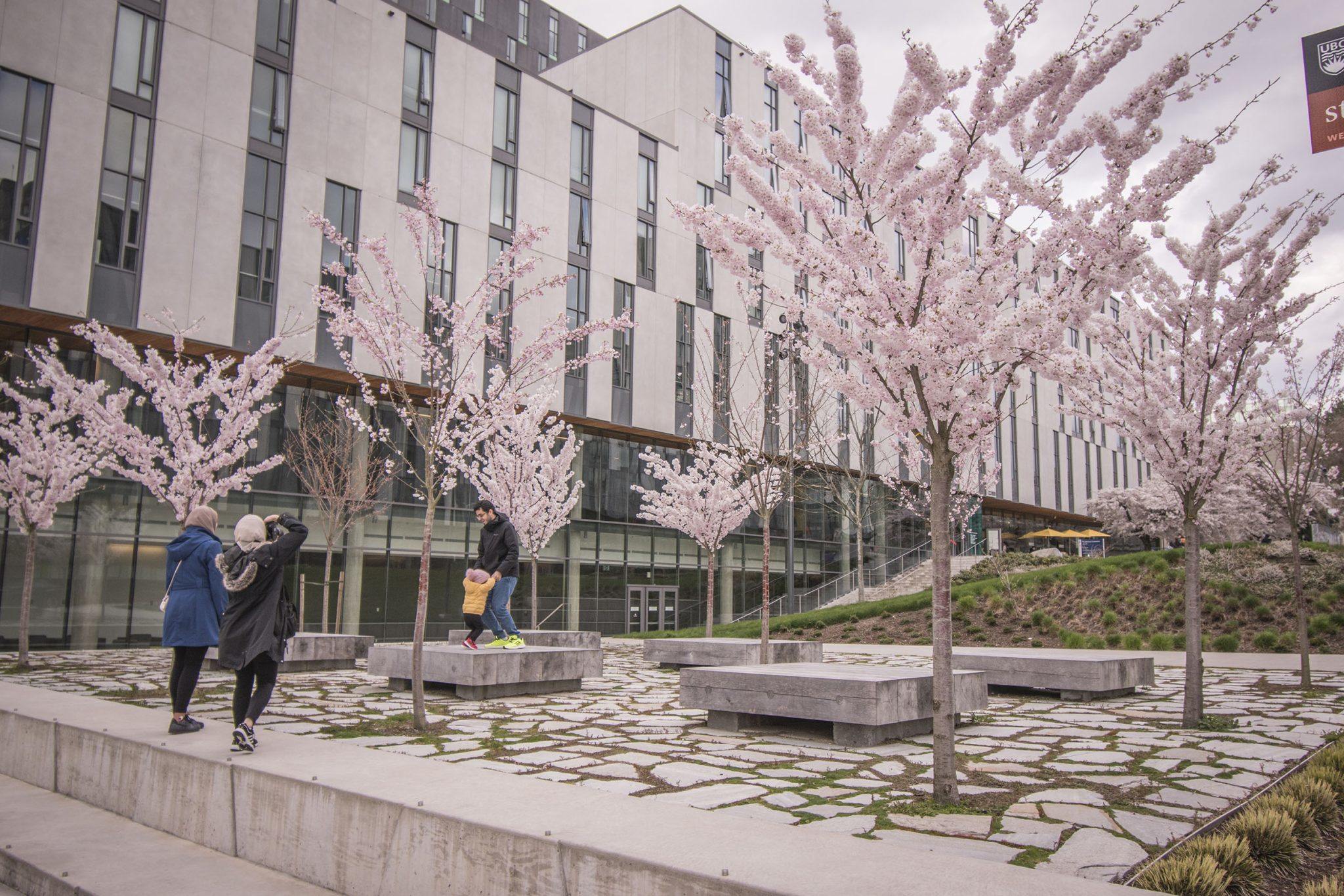



Intentional Shaping,
Inhabitable Rooms
The vision for the integration design with slope was to create a series of intentional ‘rooms’ which fan down the boulevard; inhabitable places that were as significant and multivalent as the interior programming of nearby buildings. These rooms consist of the Room; an outdoor classroom with defining chalkboard wall, the Field; a feature lawn with dramatic, parabolic geometries and finally the Bosque; inspired by existing heritage cherry trees retained on site.
The stepped landscape is designed to be viewed from the top of the slope and from below, through angled walls, and steep planes of planting. Circulation was conceived of by connecting ‘desire lines’ across the Field. These pathways were the genesis of the formal arrangements of elements within the landscape. The outdoor classroom is the midpoint between the Faculty of Education’s two buildings. Five apple trees surround the space, and bear fruit in September concurrently with graduation, a small ceremonial gesture to future teachers’ professional aspirations. Students use the wall to promote campus-wide events or write messages of encouragement. At the bottom of the boulevard sits the Bosque – a small contemplative space roofed by a grove of cherry trees, with special square ‘hanami’ benches and a delightful flagstone paving pattern.
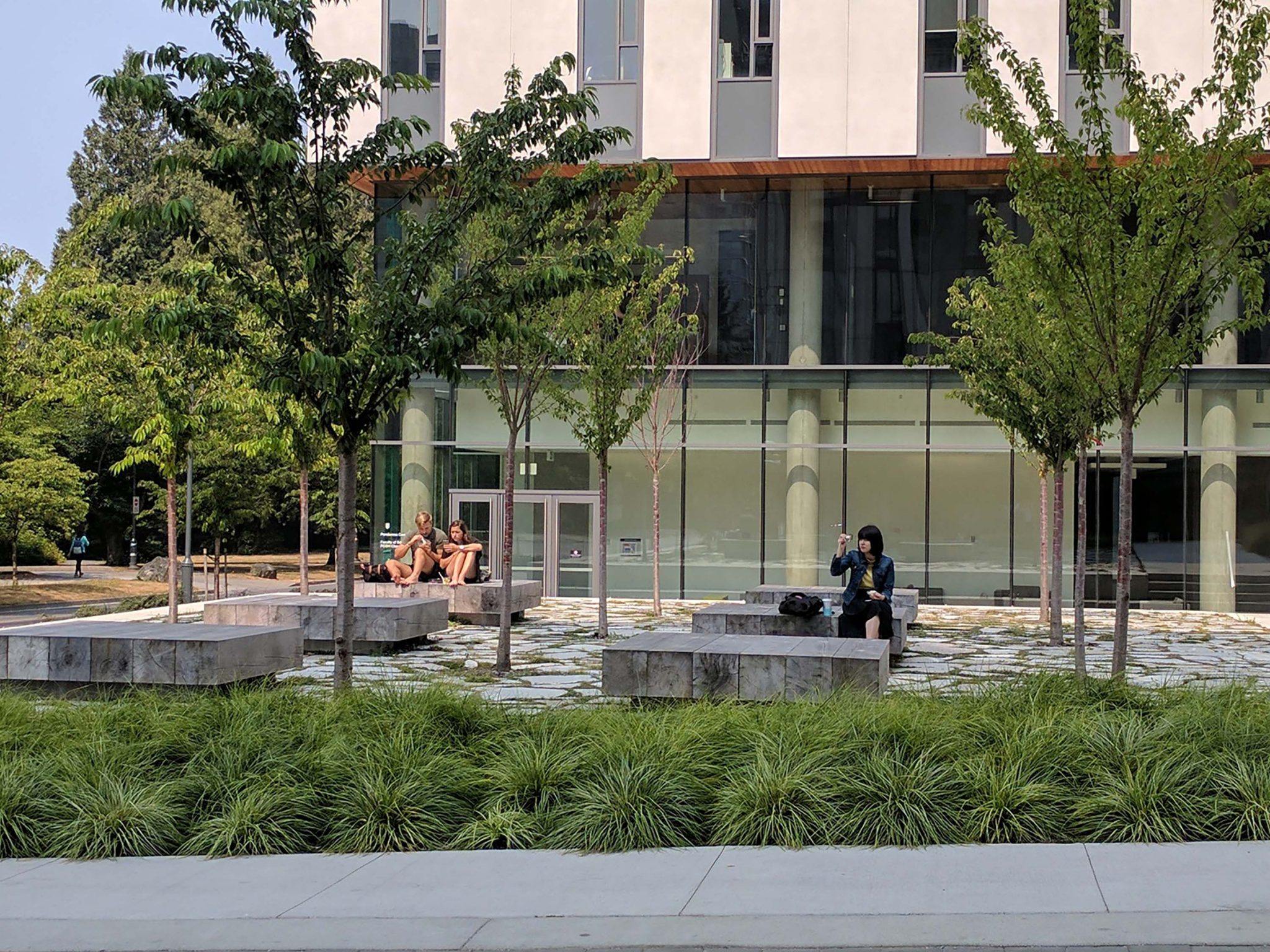
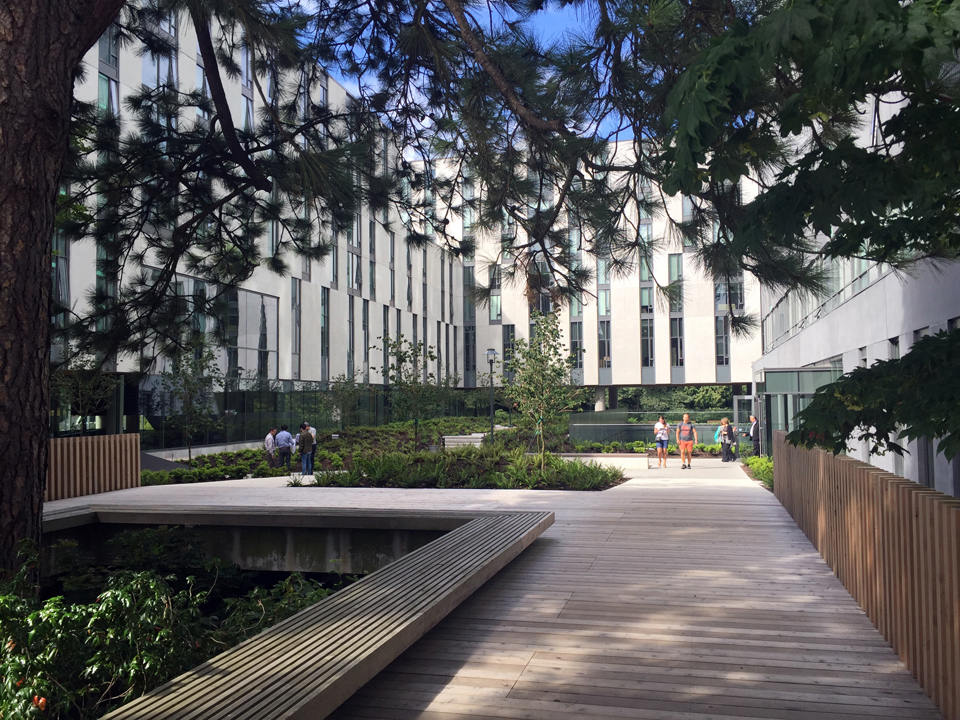
Protecting the Spirit
of the Commons
The retention of a massive, magnificent Ponderosa Pine – the namesake of the Commons – was achieved by re-purposing an existing deck and garden surrounding the tree. Hapa employed precise but subtle updates: a new surface and railing for the deck, and new native-focused plantings for the garden which would marry the tree to its new environment while taking utmost care with the tree’s health. The tree remains an icon for the project, representing a new era for the campus but anchored in the traditional reverie for nature. The Commons are a flourishing example of intentional placemaking as a means to enliven spirit.
